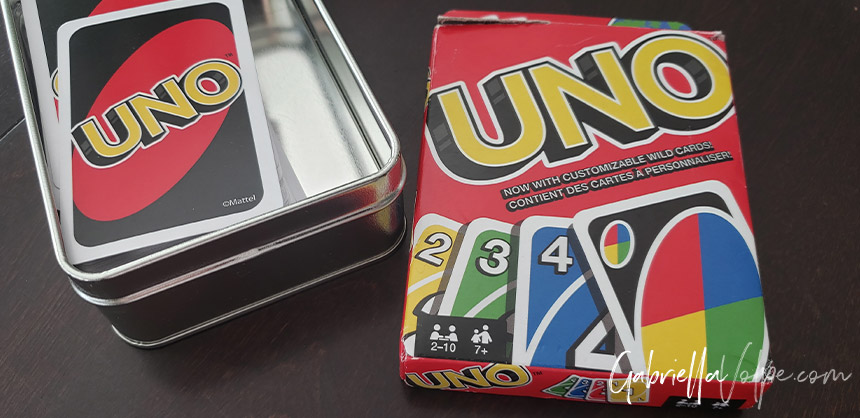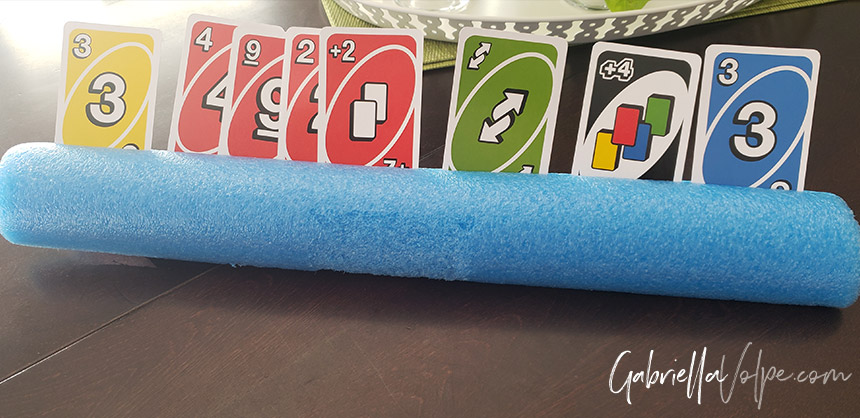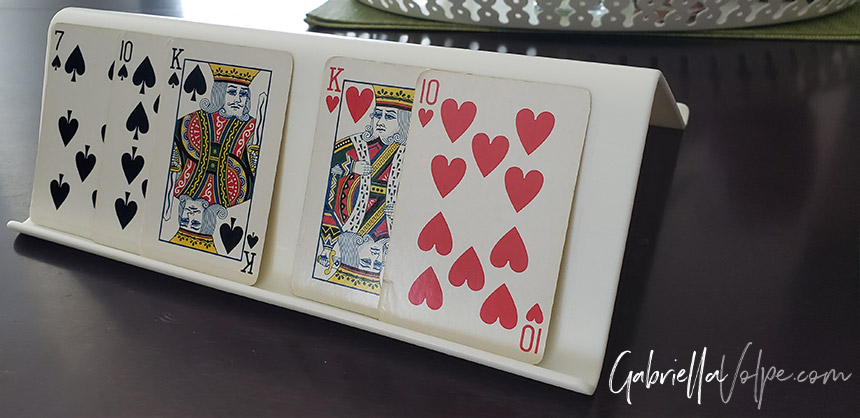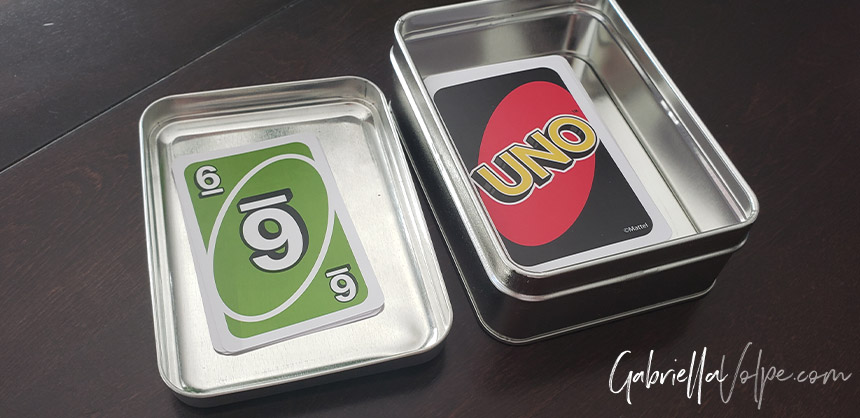This article is part of the Adapting Board Games for Neurodivergent and Disabled Kids series. Find the main page for this series here.
Popular Card Games
- Uno
- Go Fish!
- Crazy Eights
- Old Maid

Uno is a popular card game I grew up playing as a family.
Card Game Challenges for Neurodivergent and Disabled Kids
- Grasping, holding, and manipulating the cards can be tricky for some kids
- The complexity of card game rules and strategies can be a challenge
- Traditional playing cards can be difficult to decipher
Skill-Building with Card Games
Card games help with:
- Identifying numbers
- Sequencing numbers
- Comparing numerical value
- Equivalency
- Mental math
- Skip counting
- Vocabulary
- Communication
- Asking questions
- Picking up and holding
- Taking turns
Suggestions for Adapting Card Games
Use card holders. When holding cards is a challenge, find supports that make sense for the child.

Here, I’m using a slotted pool noodle to hold the cards. I like this option because the cards remain securely in place so that an adult can lift the entire noodle/hand of cards and bring it directly to the player. This works especially well for kids who might pull on the cards or chew the foam. Tip: Cut the noodle in half so that it doesn’t roll around on the surface.

Another option is using a tech stand. This works well for kids who can more easily pick up the cards but might struggle to hold them in one hand. Note: I got this stand at IKEA for a few dollars.
Use containers. For making picking up the cards from a pile more manageable, place the cards in a slightly larger container than the cards themselves.

This tin and lid keep the cards contained and more easily stackable while also allowing for space on the side for fingers to fit and grab the cards.
Change the rules. Cards allow for creativity! Change the rules or make up new ones to create an inclusive game for everyone!
Familiarize the child with traditional cards first. Traditional playing cards can be difficult to decipher at first. Photocopy the cards enlarged and then laminate. Get the child familiar with the images, symbols, colors, and value of each card before playing with others. Practice by playing matching, sorting, and counting games, etc.
Related Articles

Play and Learn Board Game Challenge
Take the free 3-day challenge that takes you from choosing to implementing board game play with neurodivergent and disabled learners.

0 Comments